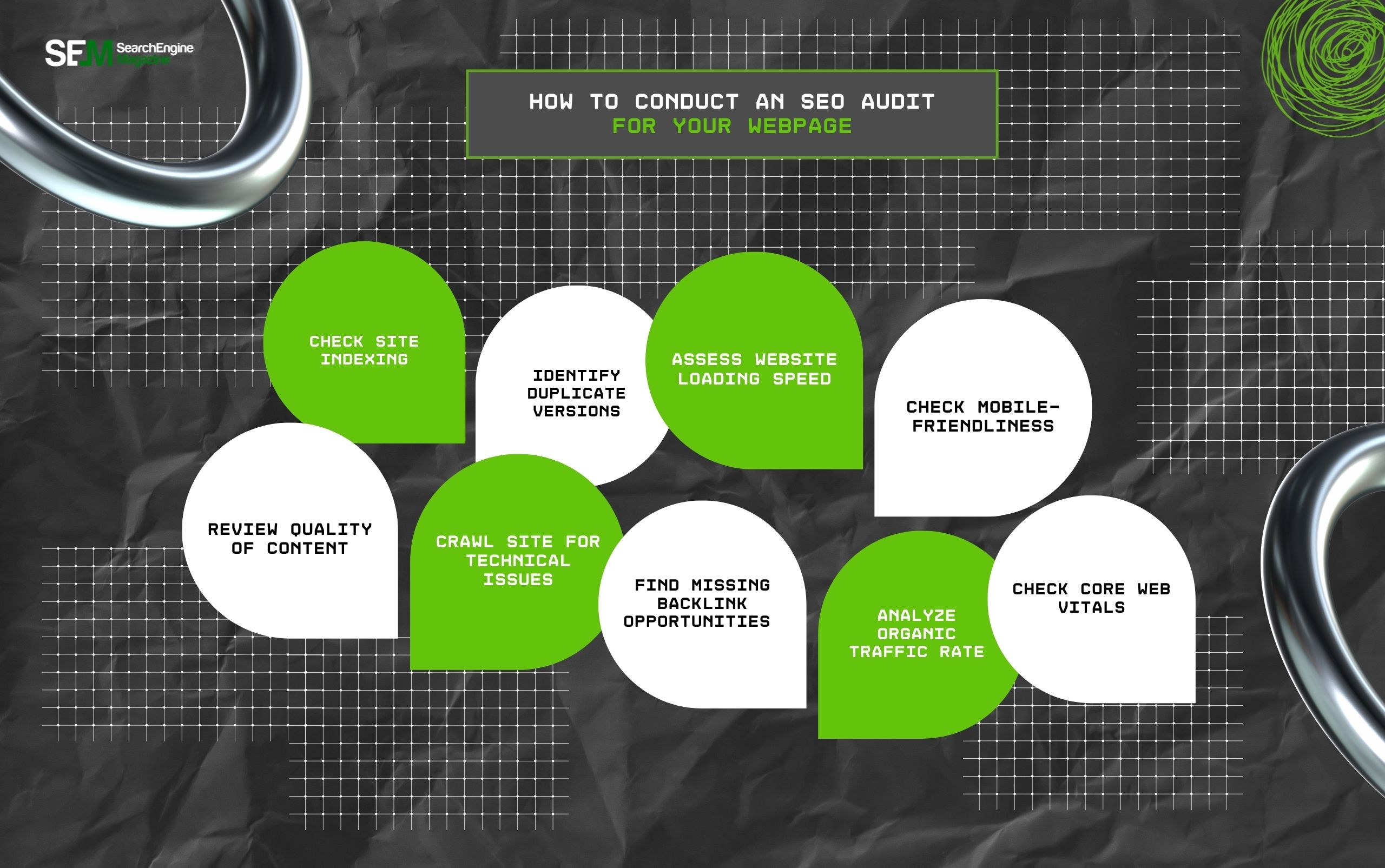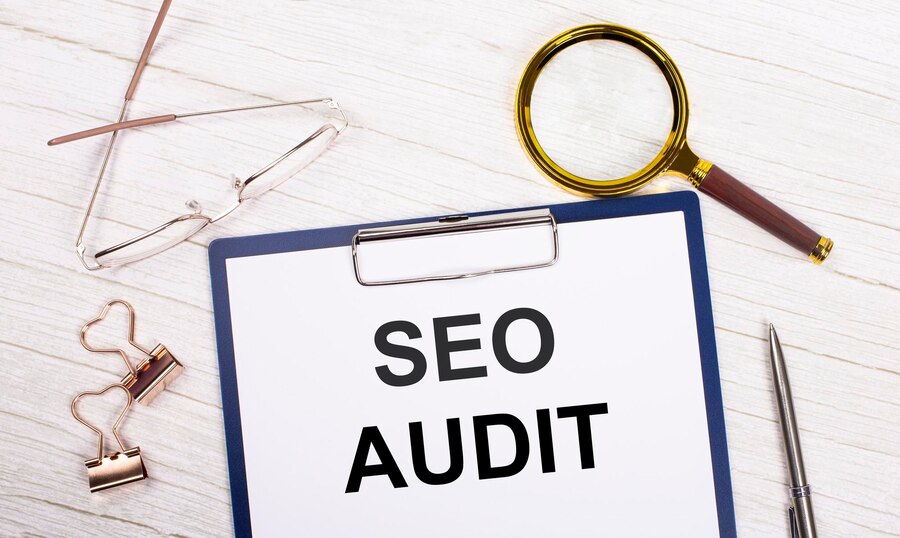Real Estate Link Building That Actually Works: Earn Local Authority, Rankings, and Better Leads Without Spam
Dec 10, 2025

Dec 10, 2025

Dec 10, 2025

Dec 09, 2025

Dec 09, 2025

Dec 05, 2025

Dec 05, 2025

Dec 04, 2025

Dec 04, 2025
Sorry, but nothing matched your search "". Please try again with some different keywords.


Without a slight bit of idea about how SEO works, it can be daunting to manage the online presence of a brand. Since the search engine algorithm is constantly evolving, maintaining its performance at all times is not an easy job.
Sometimes, the organic traffic can dynamically rise with a slight tweak in the algorithm. Other times, it can drastically fall without any known updates in the algorithm..
That’s why regular SEO audits for brand websites are vital.
Moreover, it can help identify the common issues impacting the website’s performance. Making it easier to fix them and boost the traffic count.
In addition to this, it helps in assessing how the various elements of the websites — on-page, off-page, technical, and web design — are performing. Providing an overview of the website’s performance.
But without a proper guide, performing an SEO audit can feel like a Herculean task. So, if you are wondering— “What is SEO Audit and how to do it?” I have got you covered.
In this comprehensive guide, I am going to explore the diverse nuances of SEO audits by focusing on—
Stay tuned!
First things first, an SEO Audit is the process of analyzing all the key SEO factors to find issues with the website performance.
That is, it evaluates the SERP ranking, on-page optimization, and other SEO aspects to identify the areas that need improvement. Helping marketers improve the website’s online presence.
Moreover, it comprehensively assesses the core SEO issues affecting the website’s performance. So, users can easily fix them to improve the performance in a short time.
Even though the site performance is up to mark, it still needs regular SEO audits.
As these audits provide ample insights about how the website is performing on search engines, it is quite beneficial for managing brand websites.
So, some of these benefits of SEO audits include—
According to the report from the Digital Marketing Institute on the importance of SEO audits—
“Conducting a thorough SEO audit is an essential starting point for any digital marketer, whether you do so in-house or outsource the task. This is because it allows you to analyze your current SEO efforts, no matter how prolific or sparse they are, and take immediate action off the back of those insights”.

SEO audits cover the core aspects of any website to understand how it is performing. So, some of these core components in SEO audits include—
Firstly, SEO audits delve into the technical aspects of the website. That is, it checks the loading speed, connection security, and indexability or crawlability of the website.
Moreover, it also checks the mobile friendliness of the site. That is, whether it loads properly on mobile devices or not. Based on these insights, it finds where the issue lies.
The SEO audit also checks the on-page performance of the websites. So, it examines the quality of the content, optimization of ranking keywords, as well as the internal linking.
Now, this audit helps find broken links, a lack of relevant keywords, duplicate content, and other on-page issues. So, users can rectify them to make the webpage SEO optimized.
Along with on-page SEO audits, it also performs off-page audits. That is, it checks the quality and quantity of backlinking. Evaluating the site’s authority and relevance.
Moreover, this helps users to find spammy content and toxic backlinks that affect the ranking quality of the content.
Finally, the SEO audit checks the webpage design to see whether it is user-friendly, simple, and interactive. Also, it compares the webpage with competitors’ pages to identify areas that need immediate improvement.

Since an SEO audit is kinda imperative for improving website performance, here are the steps to perform it the right way.
Firstly, check if Google is indexing the website. Since indexing helps your website to rank on Google’s SERPs, it is vital for driving organic traffic.
So, simply type “site:(yourdomain).com” in Google’s search box and check how many pages are popping up. If most of the pages are not showing, it needs to be fixed asap.
Sometimes, duplicate versions can massively hamper the site’s performance. So, it is essential to identify and remove them.
Simply, try the different versions of your domain URL on Google search and see which ones show your website. Generally, only one is supposed to redirect to the site. But if there is more than one, remove that version immediately.
Even though it doesn’t seem much, site loading speed is one of the core ranking factors for Google’s SERPs. So, it is essential to optimize the speed.
To check the loading speed, visit Google’s PageSpeed Insights Tool and click on the Analyze button. Then, it gives a detailed dashboard of how the site loads for mobiles and desktops.
Since most users search for keywords through their mobile phones, Google ranks mobile-friendly pages over the others.
So, a simple check of the mobile version of the website can help identify the issues instantly. Allowing users to rectify them for better SEO performance.
Apart from the site structure, the quality of the content matters too. As Google always rewards high-quality, informative, and user-intent content, a quality check can help improve the SEO.
So, a simple audit of the structure, subject matter expertise, and topic coverage of the content can be beneficial. Also, optimize the meta titles and descriptions for more engagement.
Technical issues can significantly impact the website’s performance. Preventing it from ranking on SERPs. So, just run a site crawl on the website to check for major technical issues.
Moreover, it can give a detailed report on broken links, orphan pages, sitemap concerns, duplicate content, redirect loops, and more. So, users can fix them for better site performance.
From a ranking standpoint, backlinks are vital for every website. It helps to build authority and credibility on the SERPs. So, check for any missing backlink opportunities.
Simply, check the competitor websites to find potential backlinks in the niche. Then, try adding them to the website for more authority and improved ranking on SERPs.
One of the central metrics of SEO is organic traffic for websites. So, while doing an SEO audit, analyzing the organic traffic rate is important.
Just visiting the Google Search Console, you can check the overall organic traffic, trending pages, total number of organic clicks, and more. So, it is easier to assess and modify the strategies based on the information.
Finally, run an analysis of the core web vitals on the website. This way, users can check how users experience the website in the real world.
So, the analysis runs three metrics—
Now, an SEO audit can dynamically improve the website’s overall performance. So, ignoring certain aspects or making mistakes can affect the results.
Here are some common SEO audit mistakes to avoid for a perfect analysis of the site’s performance.
Knowing the common mistakes can help in avoiding them while conducting the SEO audit. Moreover, performing a comprehensive audit can help avoid missing or neglecting core SEO elements.
Now, with this simple guide, anyone can do an SEO audit for websites. So, what are you waiting for? Go ahead and run a simple SEO audit to skyrocket your website performance today!
Here are some common questions around SEO audit that you can check.
There are a lot of tools that can help with an SEO audit. So, some of these tools include—
» SEO Analyzer— Measures critical SEO factors.
» Ubersuggest— Offers backlinking audits and content performance analysis.
» Screaming Frog— Finds broken links, duplicate content, and missing meta tags.
» Copyscape— Identifies duplicate and plagiarized content.
» Lumar— Checks the technical issues of the websites.
If there are duplicate versions of your site, you need to remove them. So, use the canonical tags to find the duplicate versions of your site and add the 301 redirects to remove them.
Yes. SEO audit is simple and easy to perform. So, users can easily do their own SEO audits using various tools. Moreover, they can either do the SEO audit manually or use the free tools like Google Search Console for a comprehensive auditing of the websites.

Real Estate Link Building That Actually Works...
Dec 10, 2025
Why Health-Conscious Consumers Choose Blockch...
Dec 10, 2025
How To Buy Xupikobzo987Model? Decoding The Mo...
Dec 09, 2025
Workplace Management EWMagWork: Is This Smar...
Dec 09, 2025
Social Media Stuff EmbedTree: Is This Digita...
Dec 05, 2025

